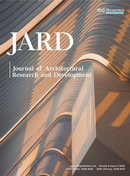Abstract
There are many factors, that affect the development of indoor fire, such as the size of the fire source, the opening or space of the room, and the nature of the combustible materials. Among them, the space of the room, has a significant impact on the development of a ventilation-limited fire. In this paper, the Fire Dynamics Simulator (FDS) software is used to analyze, the risk of fire initiation in the restricted ventilated compartment, when the size of vertical ventilation space is different. Through, a combination of experimental design, numerical simulation, and theoretical analysis, the changes in the level of carbon monoxide, visibility, temperature, Heat Release Rate (HRR) and, the smoke exhaust efficiency of natural smoke at different opening sizes are observed. It is observed that, when the ratio of inlet and outlet area reaches 2:1, the natural smoke exhaust effect is the best, however, the increasing in the opening size has little significance on the smoke exhaust effect. The research on the influence of smoke outlet size, will helps in the development of the law regarding fire prevention, smoke exhaust design, and fire rescue work of a building.
References
Xiaohui J, Guoqing Z, Dayan Li, 2016, Effect of Opening Dimensions on Flame Ejected from a Confined Space. Fire Science and Technology, 35(08): 1058-1061.
Si-nian G, Xuemin B, Guoqing Z, 2020, Experimental Studies on upward Flame Spread under Limited Distance Effects. Fire Science and Technology, 39(05): 614-618.
Chengfei T, Guoqing Z, Zhichao Y, 2017, Study on the Influence of Fire Height on Compartment Smoke Temperature Field. Fire Science and Technology, 36(07): 920-922.
Fengyu X, Lizhi W, 2016, The CFD Simulations of Fire Scenarios Design for a Hotel Room under Different Ventilation Conditions. Journal of Armed Police Academy, 2016(10): 9-13.
Zidong G, Fengyu X, Lizhi W et al., 2011, Investigation and Statistical Analysis of Fire Load in Hotel Guest Rooms. Journal of Safety and Environment, 11(05): 149-153.
Kashef A, Hadjisophocleous G, Zhu X, et al., 2011, Algorithm for Smoke Modeling in Large, Multicompartmented Buildings-Development of a Hybrid Model. ASHRAE Transactions, 2011(11): 87-89.
Ji J, Zhong W, Li K et al., 2011, A Simplified Calculation Method on Maximum Smoke Temperature under the Ceiling in Subway Station Fires. Tunneling and Underground Space Technology Incorporating Trenchless Technology Research, 2011(3): 1034-1035.
Gutierrez-Montes C, Sanmiguel-Rojas E, Antonio S et al., 2007, Numerical Model and Validation Experiments of Atrium Enclosure Fire in a New Fire Test Facility. Building and Environment, 2007(11): 178-183.
Harmathy TZ, 1998, Simplified Model of Smoke Dispersion in Buildings by Stackeffect. Fire Technology, 1998(1): 138-139.
